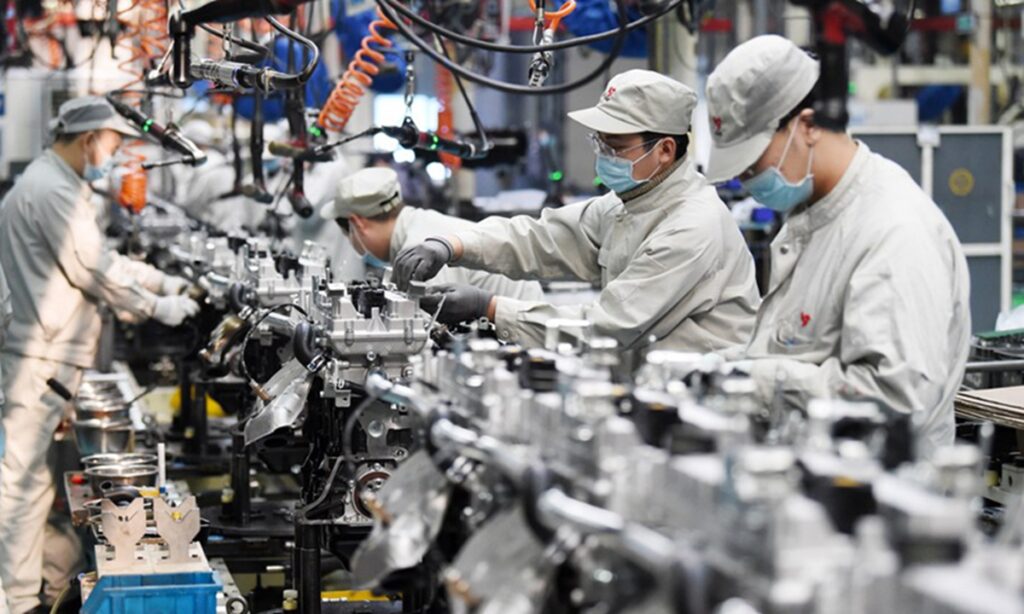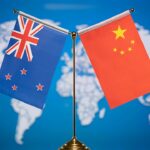Over the past 45 years of reform and opening-up, China has built a robust economic foundation. Moreover, China has chosen a challenging path to industrialization, prioritizing heavy industry over consumer goods and agricultural products.
Reflecting on this today, the development of heavy industry from 1949 to 1979 played a crucial role in establishing the industrial base. Today, China’s export structure is once again dominated by machinery and industrial products. Automation and electronic products, added later, are the outcomes of industrial upgrading based on the machinery industry, signifying that China has entered a more advanced technology cycle.
In discussing the resilience of China’s economy, especially industry, two aspects should be mentioned. First, China’s economy has a profound historical foundation. For example, in comparison to the UN industrial catalog, China has the most complete industrial chain. Second, China has experienced rapid technological progress. The claim that “China’s technological growth rate has significantly declined over the past decade” is not correct, because the calculation method used to draw this conclusion is debatable.
During the COVID-19 pandemic, China continued to enjoy economic advantages. The world economy’s dependence on Chinese products has increased rather than decreased. The connection between China’s economy and the global economy has also strengthened. Some argue that this is a temporary phenomenon and that the world’s dependence on China will decrease in the future. The reality is that the global economy will pause at the shock level and is unlikely to fully recover to pre-shock levels immediately. Therefore, China must remain confident in the restructuring of the industrial chain, as the world cannot function without China.
Industrial relocation stems from laws of economic development. Reflecting back 30 years ago, when Chinese mainland’s economy was still relatively underdeveloped, substantial funds from Hong Kong, Macao, Taiwan, and South Korea poured into the Chinese mainland. Chinese mainland also experienced a wave of industrial relocation from the “Four Asian Tigers.”
More than 10 years ago, China introduced the “go global” strategy in seeking an industrial relocation. The reason why industrial relocation has garnered more attention is due to the US’ push for “decoupling and breaking industrial chains,” which consequently increased geopolitical tensions. Many Chinese companies and multinational corporations have had to adopt the “China plus one” strategy. This doesn’t mean completely withdrawing from China, but instead establishing a backup outside of China. Naturally, this increases costs. Although China’s labor cost is currently the highest among Asian developing countries, China’s overall cost is still relatively low. Reports from Chinese companies investing in Vietnam reveal that the production cost and comprehensive cost of setting up factories in Vietnam are 30-40 percent higher than those in the Chinese market.
The US has created geopolitical risks and significantly increased the production costs of the global industrial chain. Despite this, industrial transfer remains an inevitable outcome. On one hand, China’s industry needs to upgrade, and it cannot remain in labor-intensive industries forever. On the other hand, other countries are rising. They are accepting China’s industrial transfer, just as the Chinese mainland accepted the industrial transfer from the “Four Asian Tigers” over 30 years ago. This is due to the underlying law of industrial development.
The industrial relocation is not expected to have negative impacts on China.
First, China has ample production capacity. The rapid economic growth in the first decade of this century led to an increase in savings in China, which couldn’t be transformed into individual consumption instantly. Most have become investments for enterprises and resulted in overcapacity during the financial crisis.
Second, industrial relocation will strengthen ties between China and related countries and regions. For instance, while exports from ASEAN are increasingly replacing those from China in the US and EU markets, the complementarity between China and ASEAN is increasing, with China exporting products of higher technology. In this context, the industrial relocation process becomes a win-win.
The US’ push for “decoupling” will prompt China and other countries to strengthen their ties. In the first quarter of this year, while China’s exports to the US and European countries are declining, its exports to countries in Asia, Africa, and Latin America have increased. These regions provide broader markets. BRICS has surpassed G7 in terms of GDP based on purchasing power parity, according to media reports.
The US’ unilateral “decoupling” will fail. “Decoupling” will stimulate China’s technological progress.
For instance, in the chip sector, chips were China’s largest imports in the past. Now the US “decoupling” has reduced China’s imports by hundreds of billions of yuan, creating huge opportunities for domestic manufacturers. This will form a trend, as companies need to make many changes to adopt a new technology chip. Once companies have paid the cost to make these changes, they are reluctant to start over.
Currently, China is ramping up research and development of a new generation of chips. If all goes well, China’s new products will be launched within five years, breaking the monopoly of American chips.
In an era of globalization, it is not sensible for the US to unilaterally target China, especially its exports, such as imposing high tariffs on Chinese solar panels. The US imposes high tariffs on Chinese products, and Chinese companies can find ways to set up factories in other countries to bypass tariff barriers.
The world is changing, and so is the world’s industrial chain. In this process, China’s status as world factory will not change.
(Global Times)




